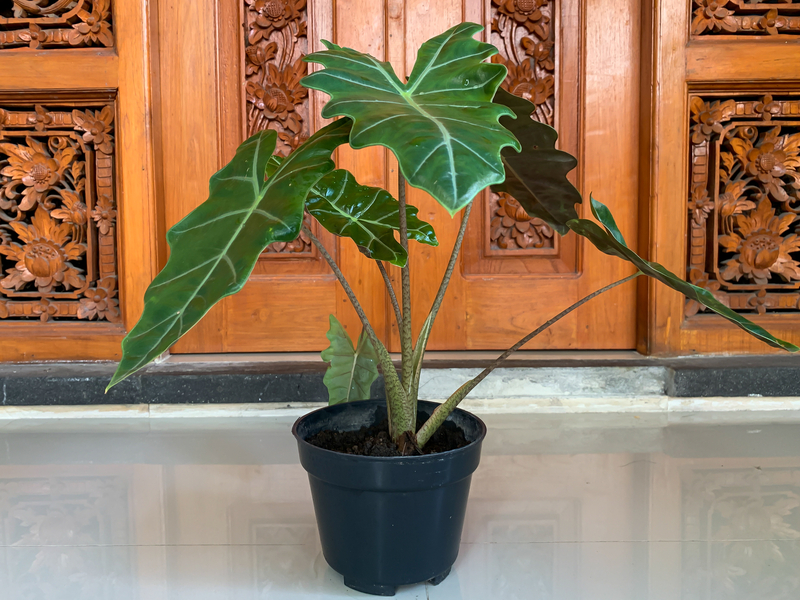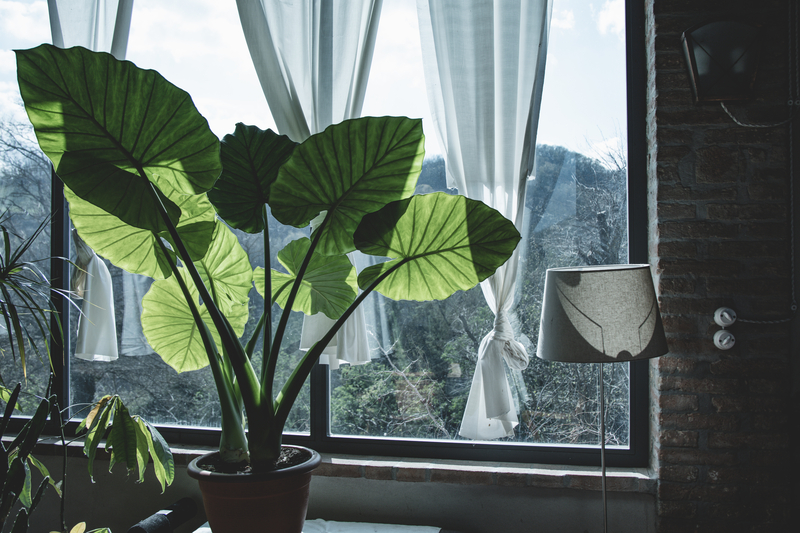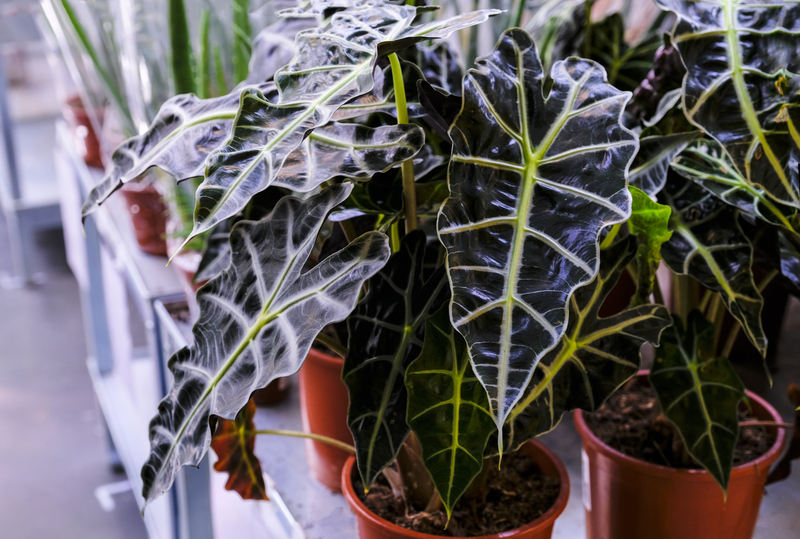If you are looking for a beautiful brand new houseplant to make a statement in your home and serve as a conversation starter at dinner parties — look no further than the elephant ear plant!
The elephant ear plant, the common name for several tropical plant species called Colocasia, Alocasia, or Xanthosoma, is named for the sheer size of its large leaves. They will make a beautiful, dramatic statement in your home. Keep reading to learn more about elephant ear plant care and how to keep one healthy.
What Do Elephant Ear Plants Look Like?
Elephant ear plants have enormous, heart-shaped (or elephant ear-shaped) leaves that can reach up to three feet long and two feet wide when growing wild in the tropics. They can come in rich green, variegated, or purple colors.
How Much Sun Does an Elephant Ear plant Need?
Indoor elephant ear plants thrive with lots of indirect sunlight. You should place your pot in an area of the home with bright windows that will cast a lot of indirect light on the plant. Avoid too much direct sunlight, as too much harsh sun can bleach or discolor the leaves.
You should try to avoid placing your plant directly in front of a south-facing window if you can or diffuse the sunlight with a sheer curtain.
If you place your elephant ear plant in a pot outdoors, place the pot in full sun or partial shade. One type of elephant ear plant called Colocasia esculenta or ‘Black Magic‘ prefers to grow in full shade, but this plant is the exception. Most types of elephant ears prefer more sunlight!
What Temperature Works Best?
Since this plant is home to the tropics, it does best in warm environments. The best temperature for this plant is between 60-80 degrees Fahrenheit.
Does an Elephant Ear Plant Enjoy Humidity?
Elephant ear plants are native to tropical areas, so they enjoy humid environments. Consider placing this plant in a bathroom with a shower since that becomes a routinely humid room in a home. You can also add pebbles to the soil for this plant since that creates more humidity when the water evaporates.
How Often Do You Water Elephant Ear Plants?
Elephant ear plants require lots of water and don’t mind living in moist soil. You may need to water the plant daily during the growing season and ensure that the soil does not dry out entirely during the warmer summer months. However, you won’t need to water the plant as much during the winter months.
In general, they need at least 2–3 inches of water per week. Keep in mind, the more water you give the plant, the faster it will grow. However, be careful about overwatering the plant as that can lead to root rot. Root rot occurs when a plant’s roots are sitting in soggy water for a long time.
What Size Does an Alocasia Macrorrhiza Grow to Typically?
With proper care inside your home, you can expect this plant to get to 6 feet or more in height.
Can You use Mulch on this Plant?
Placing mulch or other organic matter around the top of the planter can help keep the potting soil moist and help regulate the soil temperature. This prevents the plant from drying out too much or getting too cold.
Do Elephant Ear Plants Like Coffee Grounds?
Coffee grounds can act as a replacement for natural pesticides and Fertilizer, and they can help add nitrogen, moisture, and acidity to the soil. Many plant varieties benefit from sprinkling coffee grounds on the soil, but you have to be careful with some plants because they are sensitive to the effects. Elephant ears are one such type of plant.
Elephant ears thrive in soil rich in organic matter, but too much coffee can add too much caffeine to the ground and suppress the growth of elephant ear plants. It can also kill beneficial microbes in the soil that help the plant stay healthy and thriving. Adding too much can also actually block moisture from penetrating the soil.
So while it is possible to use coffee grounds as a natural fertilizer on your elephant ear plant, you should use caution and use it sparingly.
Can You Use Fertilizer on Elephant Ear Plants?
You should make sure that you fertilize your plant at least once per month to keep the plant healthy and grow new leaves. However, when fertilizing your plant, you should do it with a slow-release fertilizer every few weeks instead and plant it in potting soil rich in nutrients.
When Should you Repot an Elephant Plant?
The best time to repot an elephant ear is during the spring. Check out the complete how-to repot plants correctly guide since the tips are transferable to this plant.
Can You Plant Elephant Ears Outdoors?
If your elephant ear plant ever grows too large for your home, you can plant it outdoors in USDA plant hardiness zones 8–11. The plants will do well outdoors year-round in zones 10 or 11 and die back in the winter months in zones 8 or 9.
Planting elephant ears outdoors can be a great way to liven up your outdoor space and add some bold green leaves to your property.
What are Some Common Bugs?
Signs that bugs are attacking this plant will have holes in the leaves. Some common bugs include slugs, grasshoppers, beetles, and more. If you notice or suspect bugs on this plant, you should shower down the plant with a hose. Try and stay away from oils since that can burn the leaves since this plant needs lots of light.
Conclusion: How to Take Care of an Elephant Ear Plant?
While elephant ear plants tend to be huge at six feet in height, don’t be intimidated by their size! If you have the space for them indoors, it can be straightforward to grow elephant ears. Of course, they need a lot of sunlight and water to satisfy their immense appetite, but otherwise, elephant ear care is easy.
Similar Posts:
How to Take Care of a Pothos Plant
How to Take Care of a Money Tree Plant
How to Take Care of a Jade Plant
How to Take Care of a Mint Plant
What are Good House Plants for Low Light?




